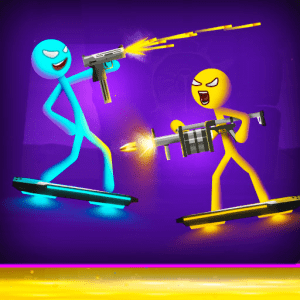Get ready to embark on a groundbreaking journey in the world of Minecraft with Voyager, the extraordinary Minecraft bot powered by GPT-4. In this blog post, we delve into the innovative creation of the Nvidia team as they push the boundaries of artificial intelligence. Voyager utilizes the remarkable capabilities of GPT-4, the powerful language model that drives ChatGPT and numerous other applications, to not only play Minecraft but also generate goals, code, and feedback to enhance its skills and explore the captivating game universe. Join us as we explore the exciting possibilities that Voyager unveils, showcasing the immense potential of language models to automate tasks and overcome challenges in the realm of computer gaming.

Minecraft is a popular sandbox video game that allows players to create and explore a virtual world made of blocks. Players can build structures, craft tools, mine resources, fight enemies, and collaborate with other players. Minecraft also has an API that lets programmers access and manipulate the game state directly.
Voyager is a bot that uses this API to play Minecraft in a novel way. Instead of relying on predefined rules or scripts, Voyager uses GPT-4 to generate its own objectives and behaviors based on the game state. For example, if Voyager sees a fishing rod in its inventory and a river nearby, it might use GPT-4 to suggest the goal of doing some fishing to gain experience. It will then use this goal to have GPT-4 generate the code needed to have the character achieve it.
The code that GPT-4 generates is not always perfect, so Voyager also uses GPT-4 to refine it using error messages, feedback from the game, and a description of the code generated by GPT-4. This way, Voyager can learn from its mistakes and improve its performance over time. Voyager also builds a library of code that it can reuse for future tasks.
Voyager is not just a passive learner, but also an active explorer. It uses
GPT-4 to generate new goals that help it discover new aspects of the game world. For example, it might decide to build a boat and sail to a distant island, or to craft a sword and fight some zombies. By doing so, Voyager can expand its knowledge and skills in Minecraft.
The Nvidia team that created Voyager consists of Linxi “Jim” Fan, an AI researcher at Nvidia; Anima Anandkumar, the company’s director of machine learning and a professor at Caltech; and several other researchers. They published their work in a
paper titled "VOYAGER: An Open-Ended Embodied Agent with Large Language Models".
The
paper shows how Voyager outperforms other AI agents in Minecraft in terms of items obtained, distance explored, and tools built. It also shows how Voyager can generate diverse and creative goals and behaviors using natural language. The paper suggests that this approach could be extended to other domains and applications where language models could be used to automate tasks and solve problems.
Voyager is not only an impressive demonstration of the capabilities of GPT-4, but also an example of how language models can be used for more than just talking. Language models can also be used for generating code, goals, feedback, and actions that can help computers perform useful tasks and solve complex problems. Voyager shows that the technology behind ChatGPT has the potential to do much more than just chat.
Voyager, the Minecraft bot created by Nvidia using GPT-4, has its source code available on GitHub at
https://github.com/MineDojo/Voyager. The GitHub repository provides a comprehensive resource for users interested in exploring and utilizing Voyager for their Minecraft adventures. The repository includes detailed instructions for installation and getting started with the bot, making it accessible to both beginners and experienced users. Additionally, the presence of FAQs (Frequently Asked Questions) ensures that users can find answers to common queries and troubleshoot any potential issues they may encounter. More information on Voyager is available here at -
https://voyager.minedojo.org/
Voyager, the Minecraft bot developed by Nvidia with the help of GPT-4, showcases the extraordinary capabilities of language models in the realm of gaming. This groundbreaking experiment highlights the potential of using AI to automate tasks, generate objectives, and refine performance in virtual environments. By leveraging the power of GPT-4, Voyager not only plays Minecraft but also demonstrates the ability to adapt, learn, and explore independently. As language models continue to evolve and advance, Voyager stands as a remarkable example of how AI can revolutionize gaming and extend its impact to other domains. The innovative work of the Nvidia team with Voyager paves the way for exciting possibilities in the future, where language models can go beyond mere conversation and become valuable companions for virtual exploration and problem-solving.














No comments: